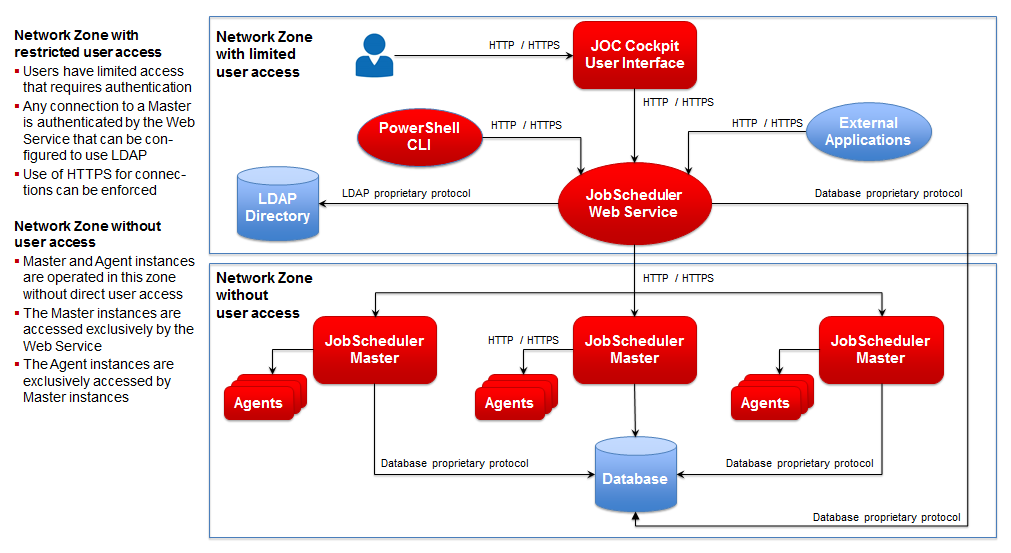...
| Excerpt |
|---|
The introduction of the JobScheduler Operating Center (JOC) Cockpit brings the following architecture:
The Web Service can be addressed by any number of JOC Cockpit instances and by external programs such as ERP applications. |
...
- Authentication and Authorization: The Web Services use an LDAP Directory for authentication, authorization is carried out against role-based group permissions data held on the WebServices server. This means that user access to particular resources can be restricted.
- Multiple GUI instances: The JobScheduler Web Services can be accessed by more than one JOC Cockpit, so that, for example, an operator situated in a remote site can carry routine tasks at the same time as an administrator in the server room is configuring maintenance procedures.
- 3rd Party Applications: External applications such as ERP systems can also access the Web Services and, for example, start jobs when they provide the correct authentication and authorization.
- Multi-Client Capability: Any number of JobScheduler Masters can be controlled via the Web Services as long as they are located in the same network.
- Job Status and History: JobScheduler Masters record operational information in a database - this information can be called up from the JOC Cockpit via the Web Services.
- Security: The architecture restricts direct user access to the JobScheduler Web Service. Only the Web Service has access to the JobSchedulers themselves.
Technical Details
...
